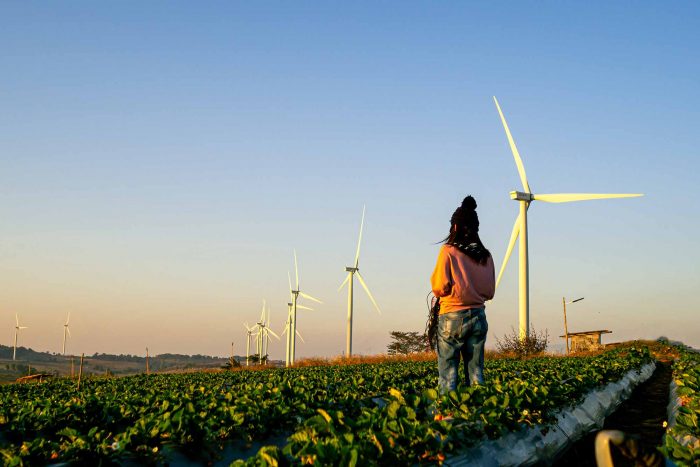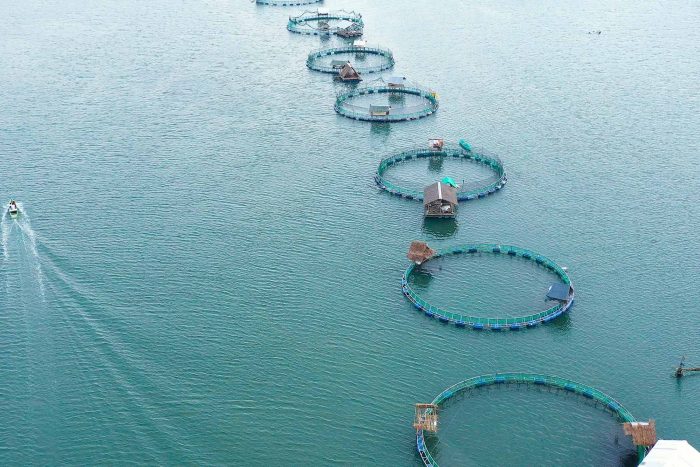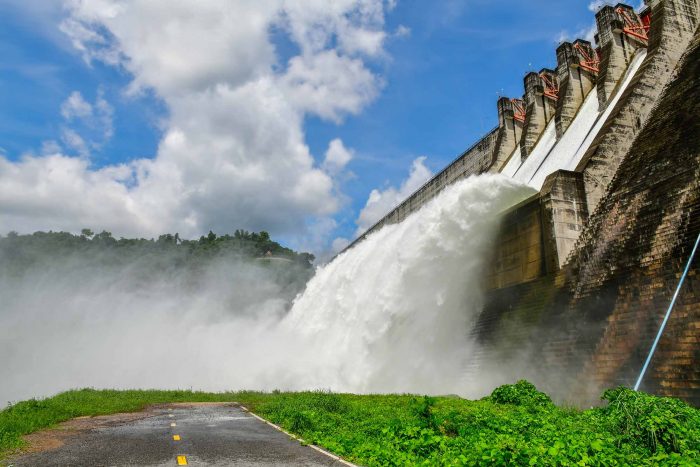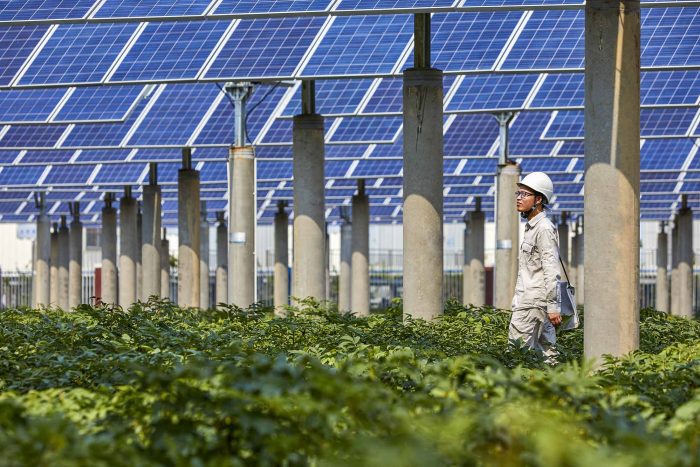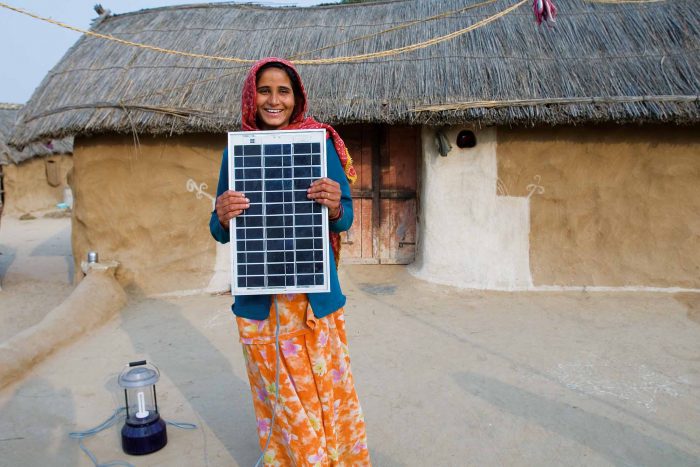Will Asia’s climate action make Australia a stranded asset?

The race for low carbon opportunities in Asia is on.
In 2020 we have seen a seismic shift in climate change policies in the region, with the three largest East Asian economies all adopting – in the midst of the COVID-19 pandemic – net zero greenhouse gas emissions targets. This means that, virtually overnight, more than half of the world’s GDP and emissions are now covered by clear and measurable decarbonisation commitments. This puts all of Asia’s key trading partners on notice: without careful planning and investment, assets could become stranded as Asia’s low carbon transition inexorably moves forward.
Key initiatives towards low carbon finance in Asia
With Japan and South Korea aiming for net zero economies by 2050, and China by 2060, the long-term macroeconomic goalposts have well and truly moved. This equates to 60 per cent of Australia’s two-way trade now being covered by net zero commitments, rising to 70 per cent when US President-elect Biden takes office next year. While these have been the most headline-grabbing developments this year, it is important to understand the depth of policy commitment across the region to the low carbon transformation. National policy frameworks remain at varying degrees of sophistication and ambition, and yet the overall direction is clear: Asia is going green. (Major economic policy frameworks are summarised in Chart 1 at the end of this article)
In parallel to, and in support of, macroeconomic, low carbon and climate change goals, there have been a raft of regulatory and soft law initiatives in Asia’s largest economies focused on sustainable finance, i.e. the channelling and enabling of private capital towards sustainable business activities. Generally, these kinds of initiatives centre on the following mechanisms:
- Corporate sustainability disclosures: These regulations and codes introduce a baseline standard for environmental, social, and corporate governance (ESG) reporting by companies in a national jurisdiction, and are generally focused on the listed companies in a given market. In designing ESG disclosure frameworks, Asian regulators, listing exchanges, and securities commissions have borrowed heavily from globally recognised disclosure framework
- Classification of sustainable business activities via taxonomies: In order to establish a foundational definition for a sustainable economic future, some regulators are exploring the development of taxonomies that seek to classify business activities according to a ‘sustainable’ or ‘green’ spectrum. In just the last year, several taxonomies have commenced development in the Asia-Pacific region, loosely modelled on the experience of the European Union’s draft taxonomy. Classification codes and frameworks for bond instruments (green, sustainable, etc.) have also started to be widely considered and/or adopted.
- Investor behaviour through Stewardship Codes: These are voluntary, signatory-based codes which require investors to take a long-term, active approach to investment, particularly through resolution of conflicts of interest in investing, engaging with investee companies on strategic business matters (including sustainability matters), and active proxy voting.
- Investor disclosures and fund classification frameworks: In line with increased disclosures from companies, regulators are increasingly turning attention to the disclosures required from investors to eliminate concerns of ‘greenwashing’. Disclosures generally pertain to both how sustainability factors are incorporated into the general investment process and risk management, and the requirements that enable funds to be held out to the market as labelled ‘ESG’ or ‘sustainable’ funds.
The increasing level of activity by the region’s regulatory authorities has been underpinned by Asian participation in global sustainable finance initiatives. Asian stock exchanges were some of the first to join the UN Sustainable Stock Exchanges established over a decade ago. Ten of Asia’s major national central banks are now members of the Network for Greening the Financial System (NGFS), a global coordinating body of central banks and supervisors set up to enhance the role of the financial system to manage the systemic risks posed by climate change and to mobilise capital for green and low carbon investments. The NGFS released climate scenarios in 2020 to provide a common starting point for analysing climate risks to the economy and financial system that are being used by regulators in the region.
Asian regulators are also participating in the International Organization of Securities Commissions (IOSCO) Sustainable Finance Network, which supported the IOSCO board in releasing a report in April 2020 advocating for greater coordination and collaboration to enhance regulatory and supervisory approaches to sustainable finance and ESG disclosures.
How corporations and investors in Asia are responding to the policy signals
Many corporations in Asia have already pursued sustainability initiatives across their businesses over the last decade. The prioritisation of sustainability for Asian companies has accelerated due to three key factors:
- The influence of global sustainability frameworks/agreements: 2015 was a watershed year as it saw the global community simultaneously adopt the Paris Agreement and Sustainable Development Goals (SDGs), both of which established global consensus around specific sustainable economic outcomes and the role of the private sector in achieving them. This was quickly followed in 2017 with the recommendations of the Task Force on Climate-related Financial Disclosures (TCFD). These frameworks have influenced two key corporate behaviours. First, there has been a significant increase in ESG disclosure across the region. Climate risk disclosure in Japan is a notable case in point, as the TCFD now has over 300 signatories committed to reporting in line with its framework – the largest number of signatories from any single country globally. ESG reporting in Asia, including TCFD-aligned, will continue to increase with mandatory environmental reporting beginning late-2020 in China, in stages from 2020 in Indonesia, and with other markets becoming more prescriptive with their ‘comply or explain’ requirements. Second, the adoption of net zero emissions business goals has started to take root. In 2020, there has been a small but notable wave of new net zero goals being adopted by influential industry giants, with meaningful influence on upstream and downstream supply chains, including Hon Hai, PetroChina, Sinopec, Petronas and SK Group. We expect to see many more to come in the short term.
- Requirements of global buyers on Asian supply chains: As multinational corporations have brought sustainability into their core business planning, the supply chain that integrates Asia with the global economy has received a stronger pu An example of this is the RE100 (a global corporate initiative bringing together businesses committed to 100 per cent renewable electricity)., which has seen renewable energy commitments from large global corporations start to flow through to their suppliers in the region.
- Focused capital raising under new green/sustainable bond frameworks: In accordance with both global and domestic bond frameworks that require proceeds to be allocated to sustainable, green, and climate transition activities, Asian companies have been quick to raise capital with these new instruments. In 2019, China was second only to the US in terms of single-country issuance, particularly driven by state-owned enterprise issuance. In June 2020, cumulative green issues in Asia were US$194 billion (compared to US$363 billion in Europe). China is the bulk of this at US$111.7 billion, with Japan, Australia, India, and South Korea comprising the rest. In 2019 and in 2020 (as of Q3), ‘sustainable bond’ issuance in Asia was nearly US$42 billion, with about a third originating in South Korea and a little under a third in China. This is a remarkable increase on only US$43 billion issued globally in 2015.
Investor action on climate in Asia has accelerated in parallel to the company actions described above with four key signals demonstrating this shift.
Flagship public asset owners: Asian domestic markets tend to be characterised by dominant public pension funds, sovereign wealth funds, and in some cases central banks, all of which are influential capital allocators. The adoption of sustainable investing by these assets owners emerges after a long incubation period alongside political support for a green development agenda. The impact of asset owner leadership on the adoption of sustainable investing is best illustrated by Japan’s Government Pension Investment Fund, the world’s largest pension fund, which triggered a rapid growth in low carbon and sustainability investment interest across the region after it went public about the adoption of ESG in 2016, with the effect cascading across the investment value chain in Asia. Since then, the fund has released ground-breaking climate scenario analysis of their investments, finding that their portfolio would be 17 per cent better off in a 1.5°C world when compared to unrestrained global temperature rises. A further example is Temasek, the Singaporean sovereign wealth fund. It has also been testing investments in new sustainable product companies in recent years, and has now committed to a 50 per cent reduction in emissions across portfolios by 2030 and to reach net zero by 2050.
Sustainable finance industry groups: Increased interest by industry groups in sustainable finance is illustrated by how the Principles for Responsible Investment (PRI) investor network has found new China-based firms to be its fastest-growing new signatory group in the world, with a 75 per cent increase since 2019. There has also been a 40 per cent increase from other Asia ex-Japan signatories. At the same time membership in the Asia Investor Group on Climate Change (AIGCC) has gone from eight initial members in 2016 to 50 as of November 2020, representing over US$13 trillion in assets under management. Just over 50 per cent of AIGCC’s members are asset managers.
Active investor collaboration: For example, the Climate Action 100+ global initiative has accelerated knowledge-sharing on effective engagement strategies for Asia-based investors with companies on climate change. The Asset Management Association of China, the self-regulatory organisation for Chinese asset managers, the Financial Services Agency in Japan and the Monetary Authority of Singapore have also surveyed members on their familiarity with ESG investing and have released supportive guides to foster greater green investing and integration.
Blossoming fund flows: Flows into ‘sustainable’ or ESG funds in Asia reached a record US$8.7 billion in the third quarter of 2020. That brought total ESG fund assets in the region to US$25.1 billion overall – 75 per cent higher than the second quarter of 2020. While classification of these funds needs more precision, this clearly signals a remarkable shift in fund buyer demand.
Asia could be a catalyst to increase activity in Australian business
Ultimately, the developments in Asia are responding not only to political conviction about the relevance of sustainability to domestic economies and the significant climate risk posed to business and investment portfolios, but also to a shifting global economic reality. Trade deals and negotiations with the European Union and the United Kingdom are now building in incentives for energy efficient and low carbon or green and clean technologies. Recently, Japan and the United Kingdom finalised the UK-Japan Comprehensive Economic Partnership Agreement (CEPA). More such deals are expected in the region.
Australia is ultimately a carbon-intensive and trade-exposed economy. It is the largest metallurgical coal and LNG exporter in the world, and the second largest exporter of thermal coal, together making up over a quarter of the nation’s exports. Of Australia’s $109 billion in coal and gas exports last year, $75.6 billion was bought by Japan, China and South Korea alone. With these countries now adopting goals for net zero emissions by or near mid-century and implementing complementary policies to start shifting their economies, the investment profile for fossil fuel projects in Australia is less clear. A delay to decarbonise Australia’s economy also potentially puts other Australian exports at risk in a world where customers are seeking lower carbon inputs overall.
In contrast to the federal approach, Australia’s state governments have universally adopted net zero economic goals for 2050. These state-level policies are helping to enable innovation and investment, renewable energy zones, and energy efficiency deployment, even in the absence of a national carbon price. The combined effect of the policy and economic signals coming from the Australian states and major trading partners in Asia has seen investors and industry in Australia also begin to respond to the net zero emissions transition. Notable examples include the adoption of net zero emissions goals in high-emitting sectors by Qantas, BHP Billiton, AGL, Woolworths and Fortescue Metals, which also announced a massive global renewables plan to build 235 gigawatts of solar and wind – more than the energy output of oil giants such as Chevron and Total.
Australian companies are also increasingly likely to find willing supporters among Australia’s largest investors for climate action efforts. In October, 16 investors with $850 billion in assets under management became founding signatories to a new 10-year campaign, Climate League 2030, launched by the Investor Group on Climate Change (IGCC) (Australia/New Zealand). The aim of the initiative is to drive down Australia’s annual emissions trajectory by a further 230 million tonnes (below projected ‘business as usual’ rates) by 2030, which would represent a 45 per cent reduction from 2005 levels. The investors involved – a mix of industry, retail and state government funds – have committed to taking at least one new action each year that will make a demonstrable contribution to reducing Australian emissions, in order to help shift the country’s trajectory into alignment with the Paris Agreement’s decarbonisation goals. While the initiative has started with investors, it will gradually open up to insurers, banks and companies to join and make their own commitments.
Further, in late November 2020, Australia’s entire financial sector, including the big four banks, major insurers and superannuation giants, called for an institutionally-embedded collective target of carbon neutrality by 2050. This was backed by a 37-point roadmap with clear recommendations for all financial actors to embed sustainability into their organisational purpose.
2020 has delivered a number of significant commitments from Australian investors on climate change. The latest IGCC investor survey showed that investor climate change strategies are now rapidly being mainstreamed into specific asset classes or whole portfolio approaches, rather than just relying on dedicated ESG funds. At the same time climate litigation over failure to consider climate change risk has targeted pension funds, with a focus on their fiduciary duty to protect members’ interests from climate risk with clear strategies. These trends will likely only accelerate as industry norms are established, tools and practice are refined and financial regulators increase their engagement on climate risk. Specific commitments in just 2020 alone from large superannuation funds have included:
- AustralianSuper, the nation’s largest superannuation fund, committing to net zero emissions across its portfolio by 2050;
- HESTA targeting a 33 per cent emissions reduction by 2030 across its investment portfolios and net zero by 2050;
- UniSuper committing to net zero emissions by 2050 and requiring all of the Australian companies in its actively-managed portfolios to have publicly-stated Paris-aligned commitments by 2021;
- Cbus committing to reducing its absolute portfolio emissions by 45 per cent by 2030 and joining the global Net Zero Asset Owners Alliance;
- Aware Super targeting a minimum reduction in its listed equities portfolio emissions by 30 per cent by 2023; and
- REST Super committing to net zero emissions by 2050.
Australia’s challenge
All the economic, regulatory, corporate and investor signals coming from Asia suggest a green revolution is rapidly taking hold. Guided by top-down policy settings, the increasing competitiveness and focus of Asian companies and Asian investors on sustainability outcomes will likely start to put pressure on Australian companies to differentiate their value proposition in the regional supply chain. Australian companies with an eye to long-term resilience need to be planning for this shift now through wise capital expenditure investments, aggressive pursuit of operational efficiencies, building out sustainability-aware management teams and boards, and boldly shifting out of markets at risk of becoming stranded. If the last five years of developments are any indicator, the next ten years leading to 2030 will be Asia’s ‘green decade’ – leaving no Australian business leader untouched.
Chart 1: Low carbon economic policy frameworks in large Asian economies
| Country (by size of GDP) | NDC GHG reduction commitment under Paris Agreement* | Net zero goal | Carbon pricing scheme | Key policy instruments/initiatives |
| China | Carbon dioxide emissions reduction by 60-65% per unit of GDP from 2005 levels; peaking carbon dioxide emissions around 2030 (recently announced moving peak to ‘before’ 2030) | By 2060 | National emissions trading scheme (ETS) implementation delayed/Eight cities currently run pilot ETS | The 14th Five-Year Plan, supported by various green finance policies focused on debt and listed equity capital markets, to be released next year |
| Japan | GHG emissions reduction target of 26% below2013 levels by 2030 (goal being reviewed in 2021) | By 2050 | National scheme under consideration, Tokyo ETS in force since 2010 | Long-term Strategy under the Paris Agreement; Basic Energy Policy; Plan for Global Warming Countermeasures |
| India | Carbon intensity reduction of 30 to 35% from 2005 levels by 2030 | – | – | National Action Plan on Climate Change |
| South Korea | GHG emissions reduction of 37% from business as usual (BAU) levels by 2030
((NDC to be revised within 2020) |
By 2050 | Korean Emission Trading System (KETS) in operation since January 2015 | Green New Deal Policy with supporting green funds launched in cooperation with local financial groups |
| Australia | GHG emissions reduction of 26 to 28% on 2005 levels by 2030 | As soon as viable in second half of the century | – | Climate Solutions Package, Clean Technology Roadmap. Long-term Emissions Reduction Strategy under development (publication expected in 2021). |
| Indonesia | GHG reduction of 29% below BAU by 2030 | – | Pilot program proposed, potential implementation in 2024 | National Action Plan on Climate Change Adaptation |
| Thailand | GHG reduction of 20% below BAU by 2030 | – | Voluntary ETS | National Climate Change Master Plan |
| Malaysia | Carbon intensity reduction of 35% from 2005 levels to 2030 | – | – | National Policy on Climate Change |
| Singapore | Halve GHG emissions to 33 MtCO2 by 2050 | As soon as viable in second half of the century | Carbon tax implemented; Signatory of Ministerial Declaration on Carbon Markets | Climate Action Plan |
| Philippines | Conditional GHG reduction of 70% below BAU by 2030 | – | Cap-and-trade system to be established | National Climate Change Action Plan |
| Taiwan | GHG reduction of 50% from 2005 levels by 2050 | – | Proposed in 2015 but not implemented | National Climate Change Action Guideline implemented in 2017, laying out 10 general principles on how to achieve climate mitigation and adaptation targets; Energy Transition Policy; GHG Reduction & Management Act |
| Vietnam | GHG reduction of 9% below BAU by 2030 | – | Legislation passed to establish a domestic ETS | National Climate Change Strategy, Law on Environmental Protection |
* NDC refers to a nation’s ‘nationally determined contribution’ to the global reduction in GHG emissions, which is required by the States Parties to the Paris Agreement to be ratcheted up over the course of time to meet the 1.5°C ambition of the Agreement.
Chart 2: Sustainable finance regulatory initiatives in Asia
| Country | Corporate ESG disclosures | Sustainable taxonomies and classifications | Investor ESG disclosures and classifications |
| China | Current voluntary, non-standard disclosures expected to become mandatory and standardised for all listed companies by end-2020 | The Green Bond Endorsed Project Catalogue with green bond financing categorisation | Asset Management Association of China issued non-binding Green Investment Guidelines to construct green investment systems and universal frameworks. |
| Japan | TCFD Consortium formed by government to support climate-aligned disclosures | Transition finance principles are under consideration | Financial Services Agency support for TCFD-aligned disclosures through TCFD Consortium |
| India | Corporate social responsibility reporting mandatory for 500 largest companies; ESG reporting is voluntary | Securities and Exchange Board of India (SEBI) issued standards for green debt securities | Business Responsibility and Sustainability Report (BRSR) to be mandatory for top 1000 listed firms by 2021-2022 |
| South Korea | Voluntary ESG disclosures in place | Currently under development and to be released in early 2021 | Voluntary ESG disclosures in place;
Financial Services Commission and Financial Supervisory Service planning to join TCFD early 2021 |
| Australia | – Required on a comply or explain basis via the ASX Corporate Governance Principles and Recommendations and Listing Rules;
-ASIC effective climate disclosure for entities and directors, Report 593 Climate risk disclosure guidance -ACSI and FSC, ESG Guide for Australian Companies (2015) |
Australian Sustainable Finance Initiative (ASFI) recommendation to explore implementing a sustainable finance taxonomy in Australia (Nov 2020) | -ASIC RG 228 Prospectuses: Effective disclosure for retail investors (12 August 2019); s710 of the Corporations Act includes ESG and climate;
-APRA is currently developing a climate change financial risk prudential practice guide; -Australian Accounting Standards Board 2018, Climate-related and other emerging risks disclosures(also for listed companies) |
| Indonesia | Mandatory for listed companies in stages from 2020 onwards | Financial Services Board issued standards for green debt securities | – |
| Thailand | Mandatory for listed companies | Sustainable Financing Framework sets standards for green debt securities | Guideline regarding asset managers to implement ESG is currently under consideration |
| Hong Kong SAR | Mandatory for listed companies applying to financial years after 1 July 2020 | Currently under development by the Green and Sustainable Finance Cross-Agency Steering Group | Hong Kong Quality Assurance Agency’s ESG Fund certification scheme (a scheme for labelled funds) (2020);
Securities & Futures Commission currently consulting industry on TCFD-aligned climate disclosures (2020) |
| Malaysia | Comply or explain for listed companies | Currently under development by Bank Negara Malaysia and to be released next year | Securities Commission’s Guidelines on Sustainable and Responsible Investment Funds (a scheme for labelled funds) (2017) |
| Singapore | Comply or explain for listed companies | Currently under development under the Green Finance Action Plan | Monetary Authority of Singapore’s proposed environmental risk disclosures for investors (2020) |
| Philippines | Comply or explain for listed companies | Sustainable Finance Framework by the Central Bank of Philippines to develop green finance | – |
| Taiwan | Mandatory for listed companies | Green Finance Action Plan 2.0 to promote long-term development of green finance | Green Finance Action Plan 2.0 encourages investors to enhance disclosure of ESG information in stewardship reports |
| Vietnam | Mandatory for listed companies | – | – |




